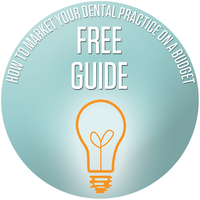
As a dentist you are experienced in working with patients who have different needs and personalities. You have also been in the dental chair personally as a patient. So, you will want to keep these perspectives in mind when seeing patients who have verbally expressed or displayed signs of dental anxiety. Each person has unique concerns or levels of fear when visiting a dentist. You will want to treat the situation with care and attention, whether they are coming in for an exam or a procedure.
Key Takeaways:
- Many patients have dental anxiety due to pain, fear, and lack of trust.
- Educate your patients about their visit.
- Encourage them to speak up about their fear.
- Offer relaxation techniques and sedation (if suitable).
- Make sure your technology and office environment are optimal.
- Remove the stigma by encouraging healthy routines at home.
A survey of 18,000 people from around the world showed that 61 percent of the respondents was afraid of going to the dentist. In addition to pain and fear of the equipment used, people are concerned that their dentist will tell them they require more dental work than they expected going in. Some also feel they will be judged for having poor oral health.
Avoiding the dentist will not lead to optimal oral health, so it is important to make new and returning patients feel comfortable and their concerns acknowledged. You can use your experience and chairside manner to make visits easier for those with dental anxiety.
What your patients are feeling:
- Pain: Fear of pain is a major contributor to people avoiding the dentist. If a patient experiences significant pain during a dental visit, they will not be eager to return. This fear can cause the patient to tense up and have a lower pain tolerance, even for minimal dental work.
- Fear: Many people have a shared fear of going to the dentist, or even healthcare providers in general. It may be tied to a specific issue they had in the past or an experience that they “inherited” from a friend or relative who talked about the dentist. Acknowledge their concerns and reassure them that you are trained and equipped with the tools and techniques to manage their dental needs.
- Lack of trust: Finding the right dentist is a big deal to patients. It is important to create an environment where the patient feels comfortable to share their concerns and build trust. People are very savvy when it comes to finding providers and reading reviews. So, if they feel their dentist ignored their discomfort they may look elsewhere. Word of mouth is also very important. Patients share their experiences with friends and relatives. They will recommend your services if you are attentive to their needs.
What you can do to help patients:
- Greet patients by their name and smile: This adds a personal touch and make each patient feel important. Whether they are a child or adult patient It can make an impact on their desire to return for another visit. You can also use small talk to put them at ease. This makes a big difference.
- Use exam time to educate your patients: What you may see as a standard part of your day can give some patients feelings of helplessness or unease. Be sure to talk your patient through each step so they know what to expect. They may worry about bright lights in their face, the use of dental instruments and the high-pitched sound of drills. Many people are naturally inquisitive and appreciate knowing what is going on. For children, you can even bust out some fun diagrams and teeth molds for demonstration.
- Encourage patients to speak up: If your patient is experiencing pain or a fear of pain, let them know they can talk to you about it. This will allow you to work together to find ways to reduce their anxiety. If they have pain points or tooth sensitivity it is very important to know. The topic may not come up unless they feel the freedom to speak up. Also let them know that you can adjust the position of the dental chair if it would make them feel more comfortable at any point.
- Offer relaxation techniques: It’s important to let your patients know they can take breaks during treatment. You can create a signal that you both agree on ahead of time, allowing them to take a short break and a deep breath. If it would be helpful for the patient to close their eyes, you can let them know when things might get uncomfortable so they can prepare themselves. You can also use other relaxation methods such as music, warm towels, and aromatherapy. In addition, using a combination of inhaled nitrous oxide (laughing gas) and oxygen is a safe and effective means of managing pain and anxiety in dentistry, according to the ADA.
- Encourage patients to bring a support person: Having a familiar face can make a stressful or uncomfortable experience more bearable. So be sure to let them know they can bring someone to sit with them during their visit.
What you can do to enhance your practice:
- Stay up on industry advances: Dentistry is always changing. So, it pays to stay up on new advances to provide an optimal experience for your patients. Luckily, there are plenty of resources out there to help you. For example, panoramic X-rays mean patients no longer must deal with those hard tabs. And topical anesthetics are more common and effective than ever.
- Boost your office environment: You will want to make sure your office feels inviting and set-up for the types of patients you already see and those you want to appeal to. That could include elderly patients, pediatric patients or people with special needs. Preparing your office and staff properly will put your patients at ease from the beginning and help you gain their trust and cooperation when it’s time for treatment. If needed, you can look at additional staff training, updating your reading materials, placing TVs in the waiting room, or having child-sized furniture and board games. You may also want to look at your treatment room policy, say if parents or caregivers are not currently allowed into treatment rooms.
- Offering sedation: If you have any patients displaying fear or anxiety, sedation can make dental procedures much more comfortable. Per a study by Anesthesia Progress, the use of minimal sedation is typically safe and effective in healthy adults. It requires the appropriate dose being prescribed and adequate time to allow the drug to reach its peak effect. For patients with higher levels of anxiety, dosages may need to be titrated intravenously. Then are some who may require deeper levels of sedation or general anesthesia. Once appropriately determined, talk with the patient about their options.
Encourage your patients to keep up healthy routines: - Brush carefully and often: Establishing a healthy routine at home will keep your patients more aware of their oral health each day, helping to make those dental appointments less startling. We all know that brushing and flossing twice a day is the goal, and you can brush after every meal if you’re feeling more ambitious. Make sure to encourage your patients to slow down while brushing. Moving the toothbrush too vigorously can damage the gums and the level of clean may not be adequate. You can also encourage your patients to brush their tongue, to take care of bacteria and bad breath!
- Offer free toothbrushes with your logo: Using the same toothbrush for too long is like using a dirty sponge to clean the dishes. Let your patients know about changing out their toothbrush every few months, and why not give them a free one with your office name or logo on it.
- Encourage patients to seek help in advance for their dental anxiety: If you have any patients who have anxiety related to dental visits, you can encourage them to talk to their primary care doctor about seeking professional help. The idea is to use techniques that gradually desensitize the patient to their fear. There are things they can try, like hypnosis treatment or having some trial visits before a dental treatment.
While you can’t plan for every scenario, you can do your best to minimize any fears the patient may have in the moment or and any issues they are anticipating. Here is to happier patients, improved oral health and more people through your door!
Disclaimer: This is provided for educational and informational purposes only and does not constitute providing medical advice or professional services. The information provided should not be used for diagnosing or treating a health problem or disease, and those seeking medical advice should consult with a licensed physician.



